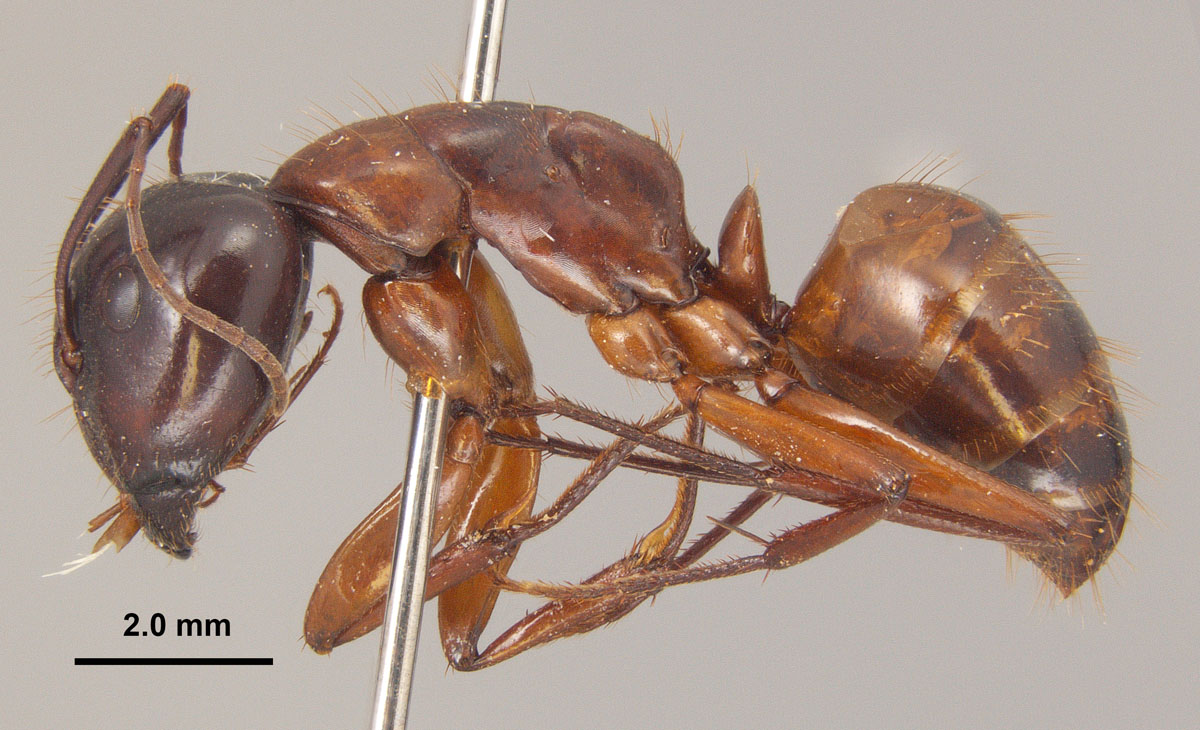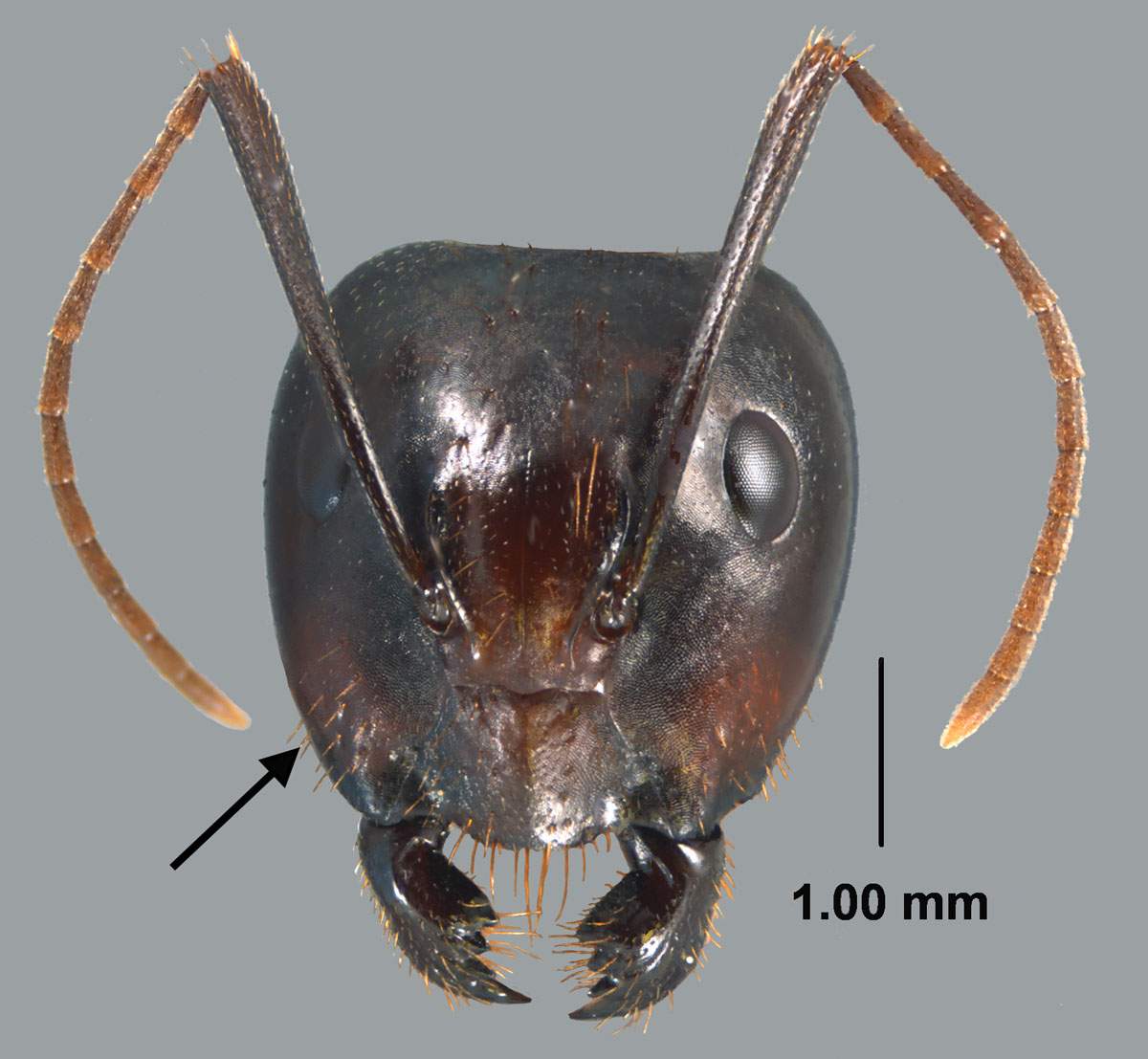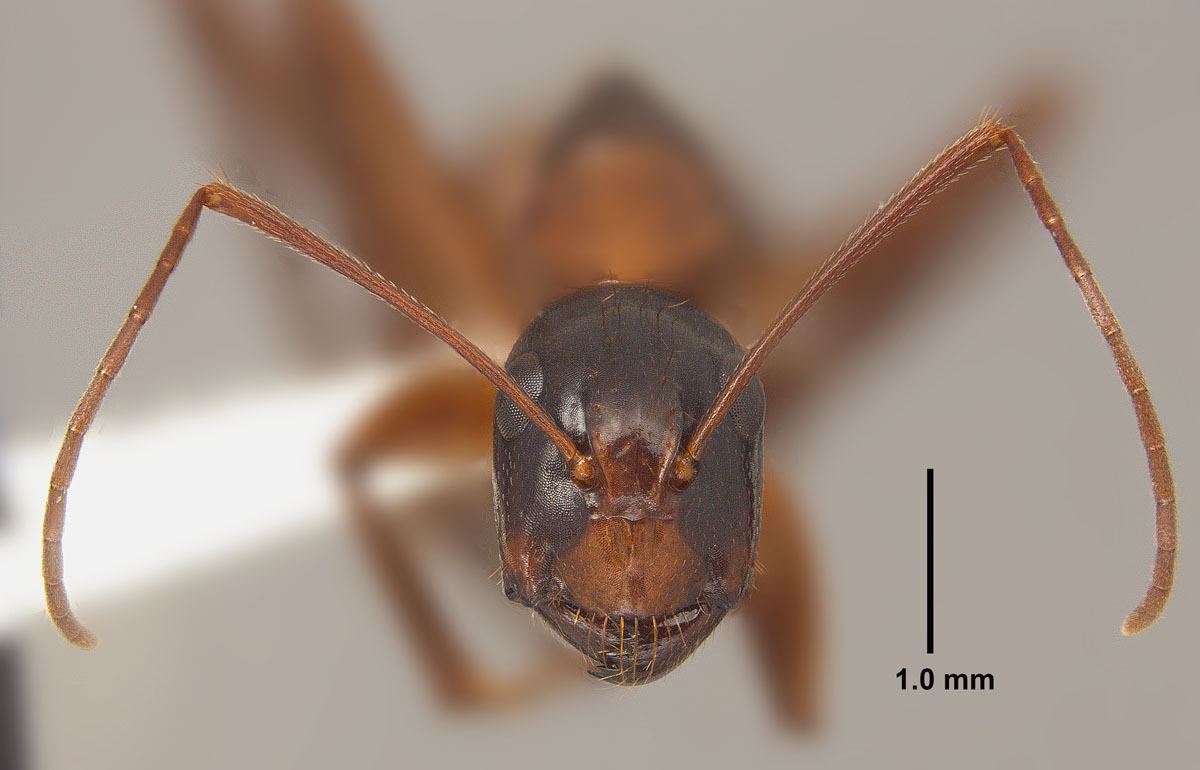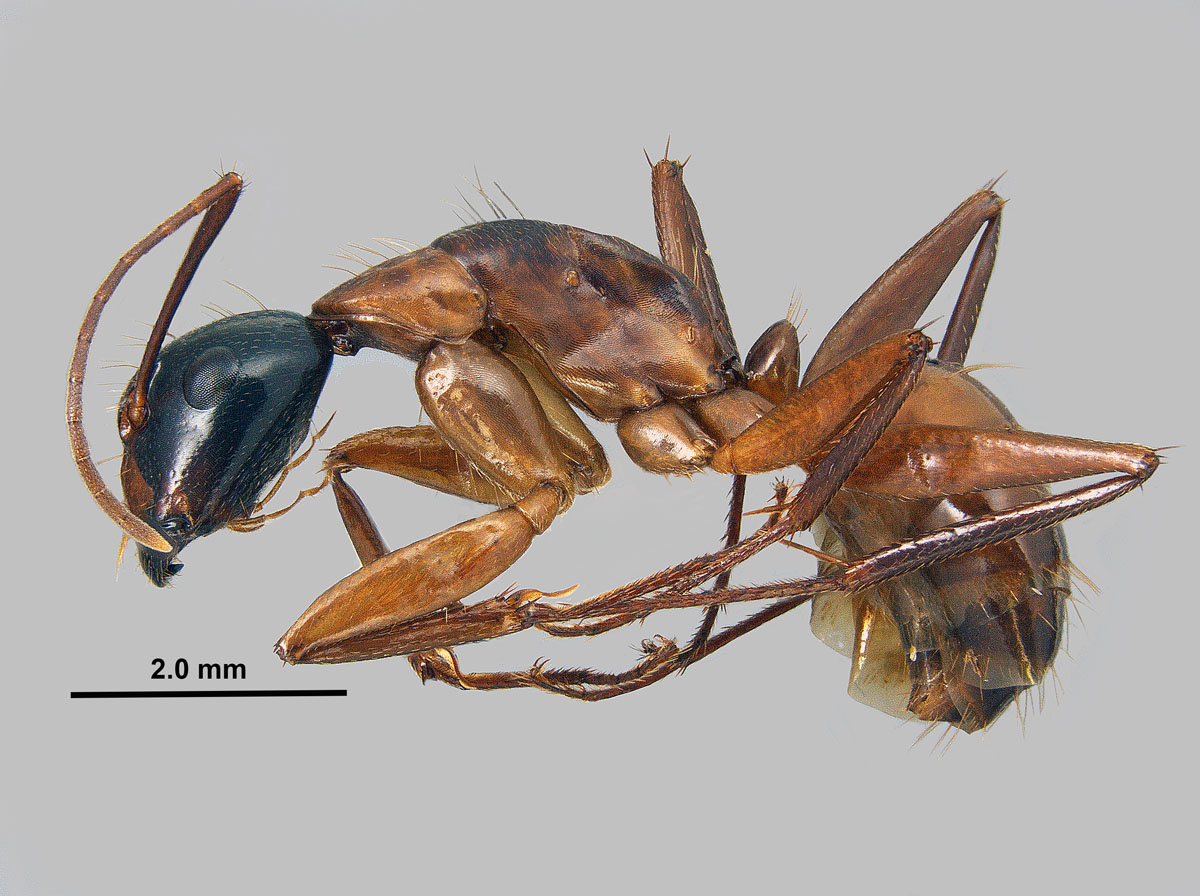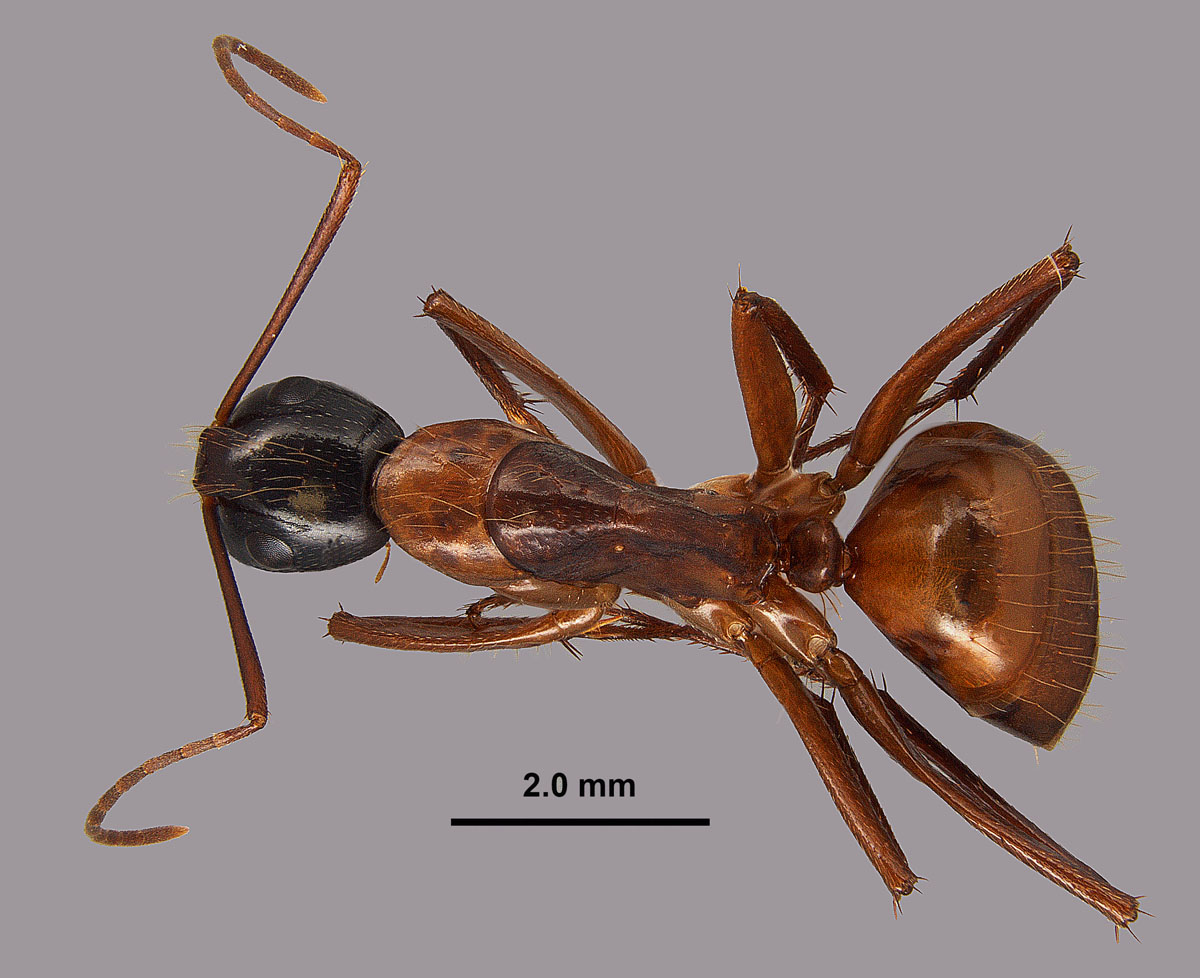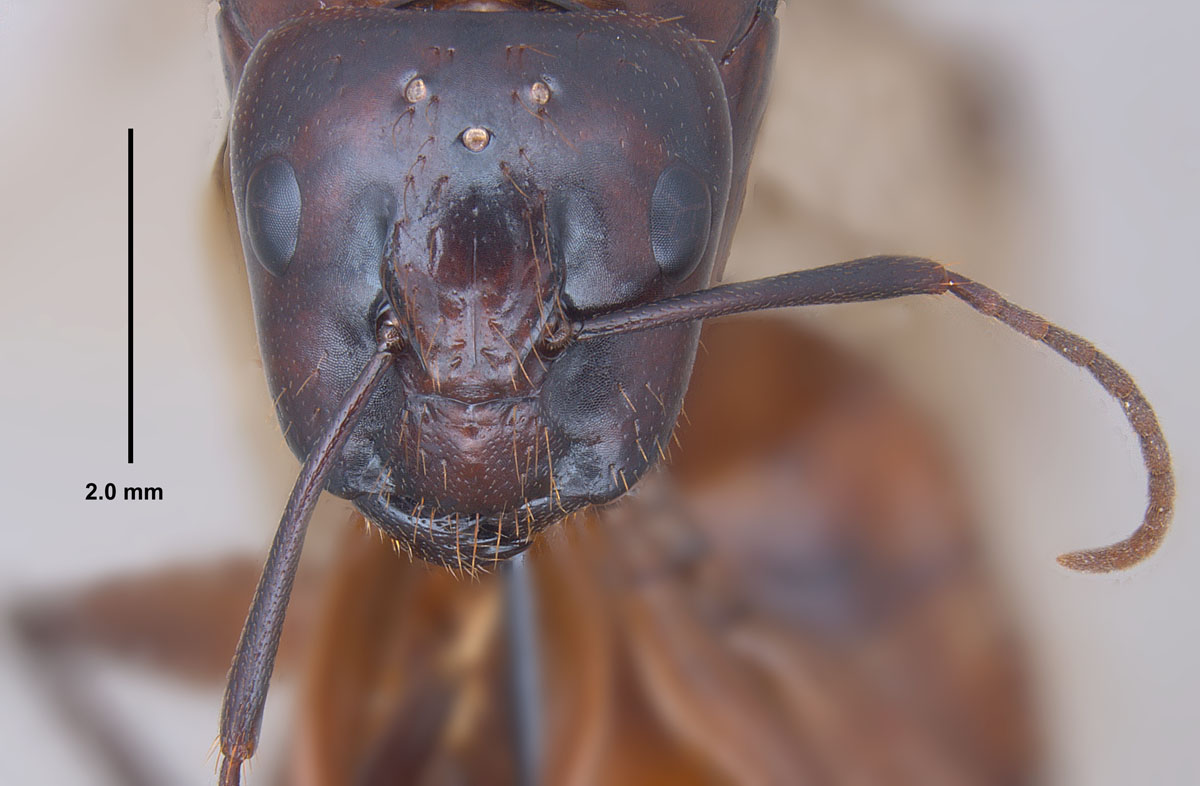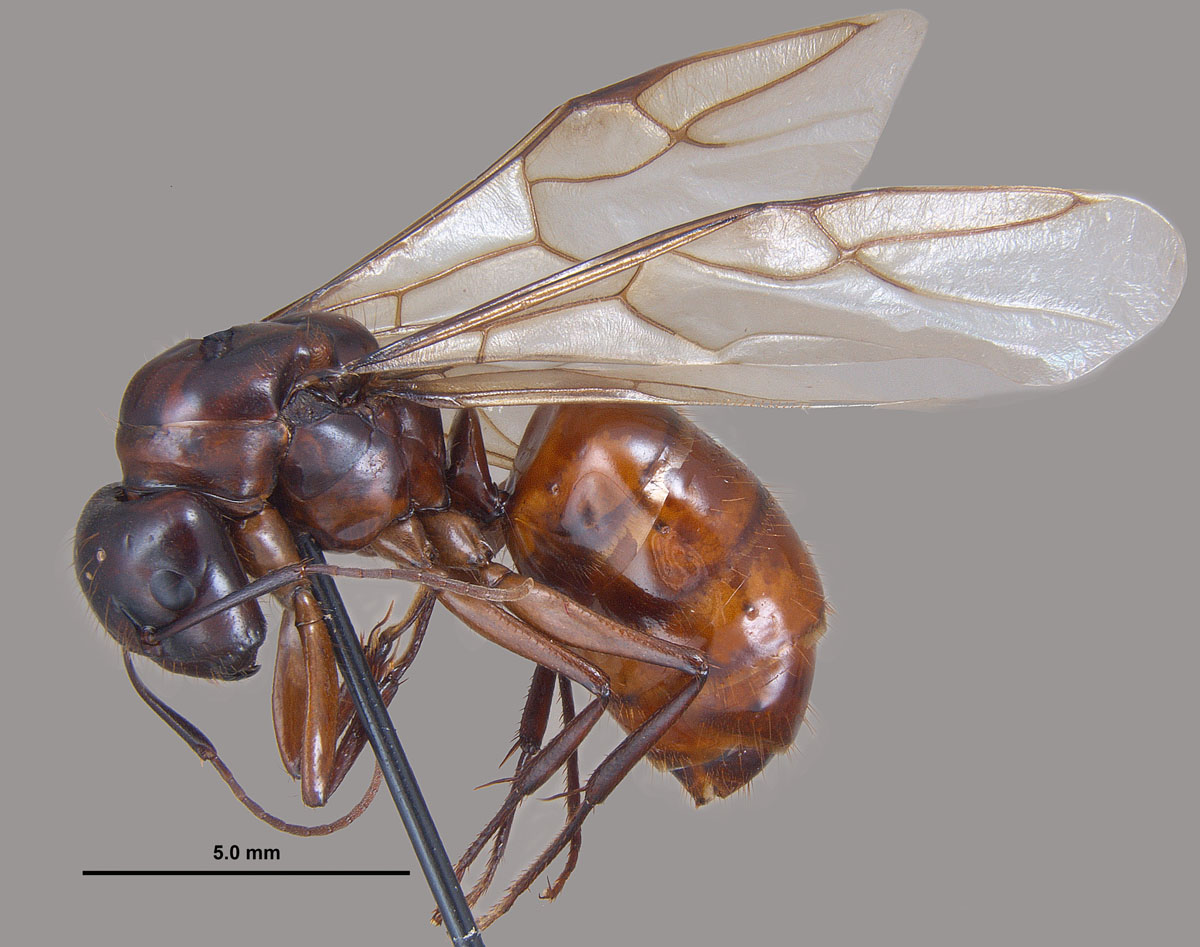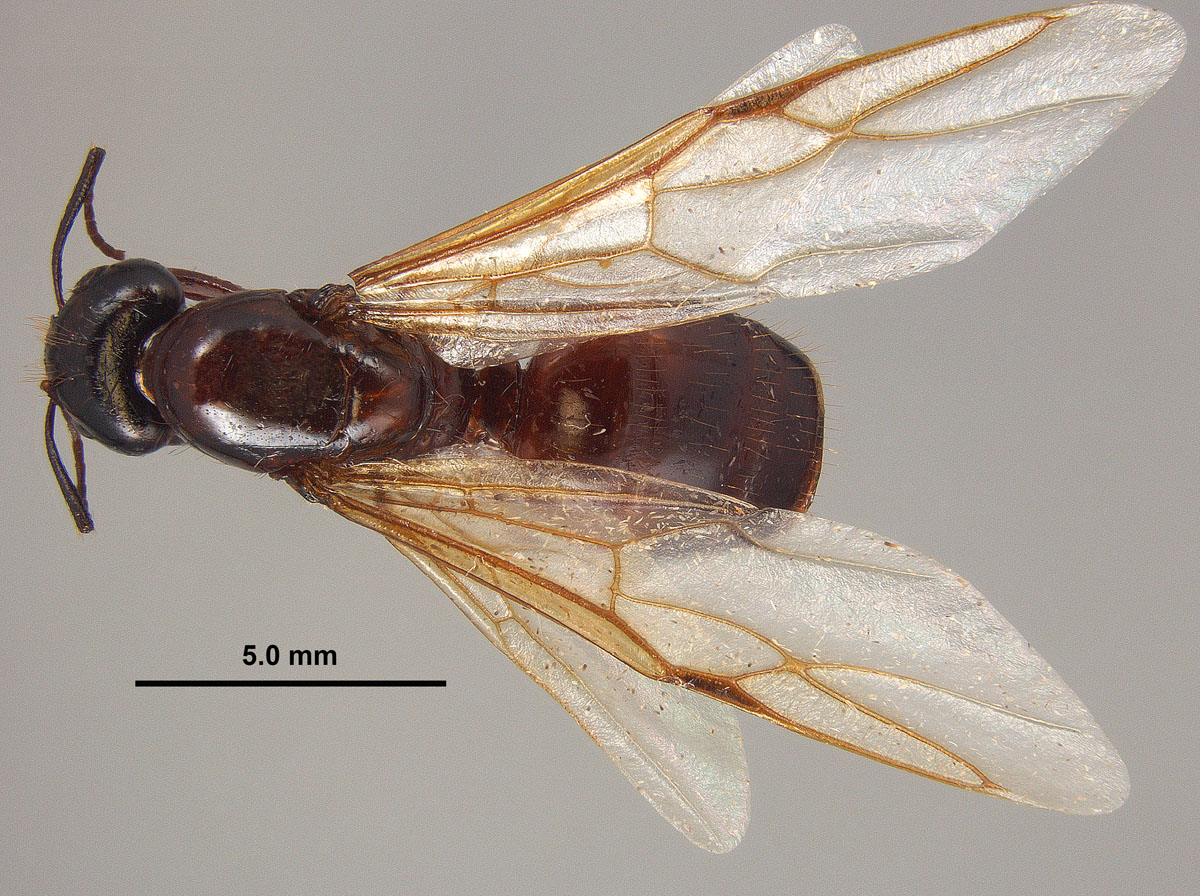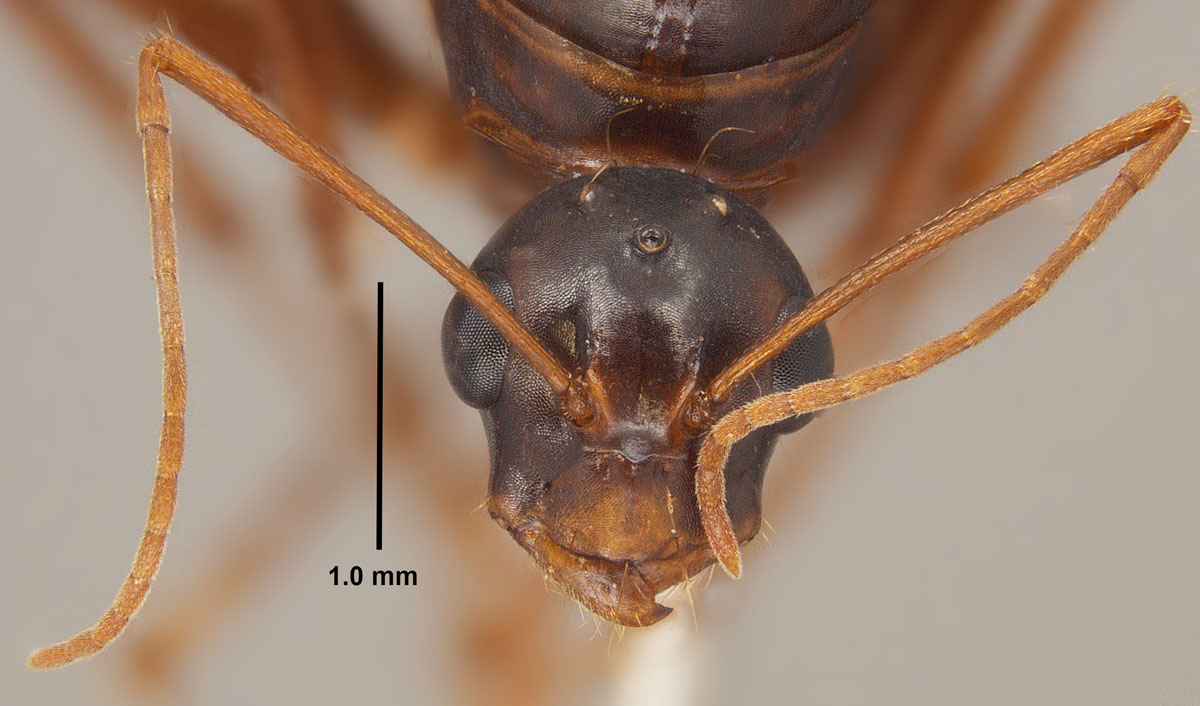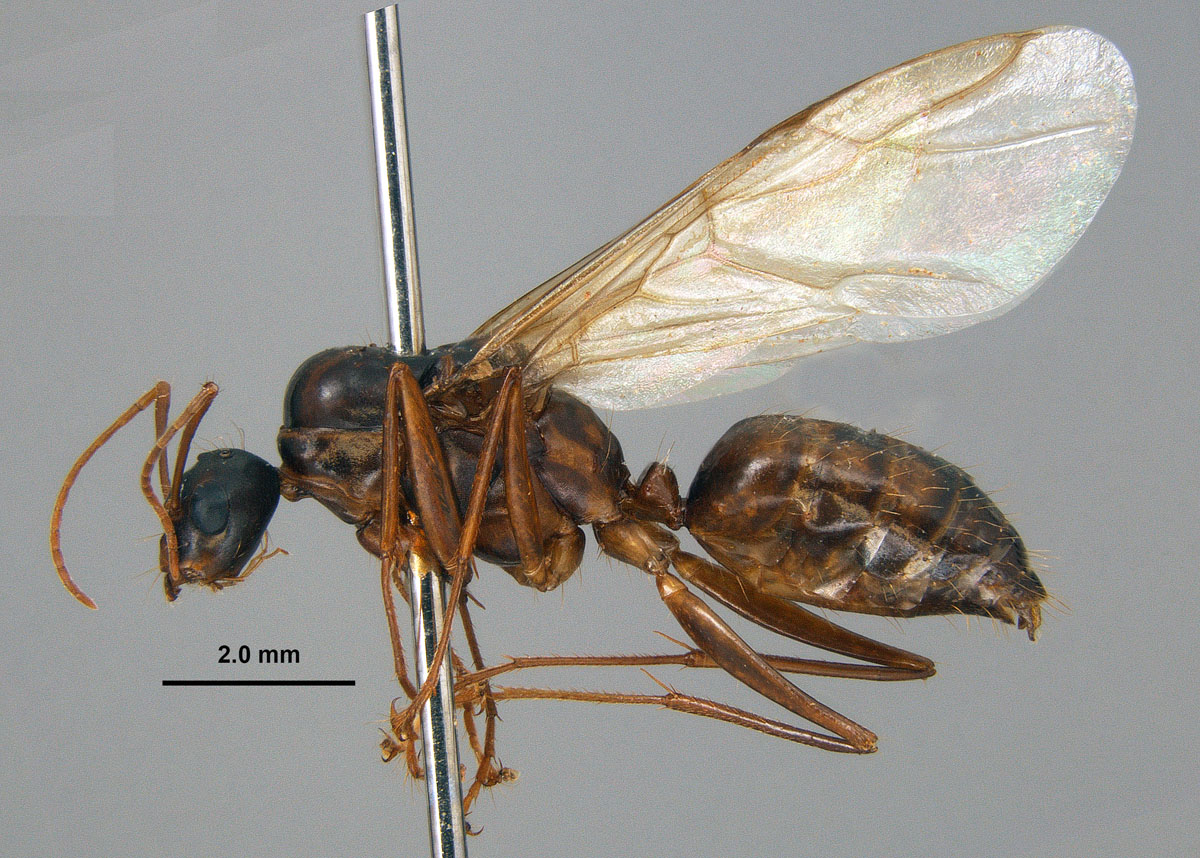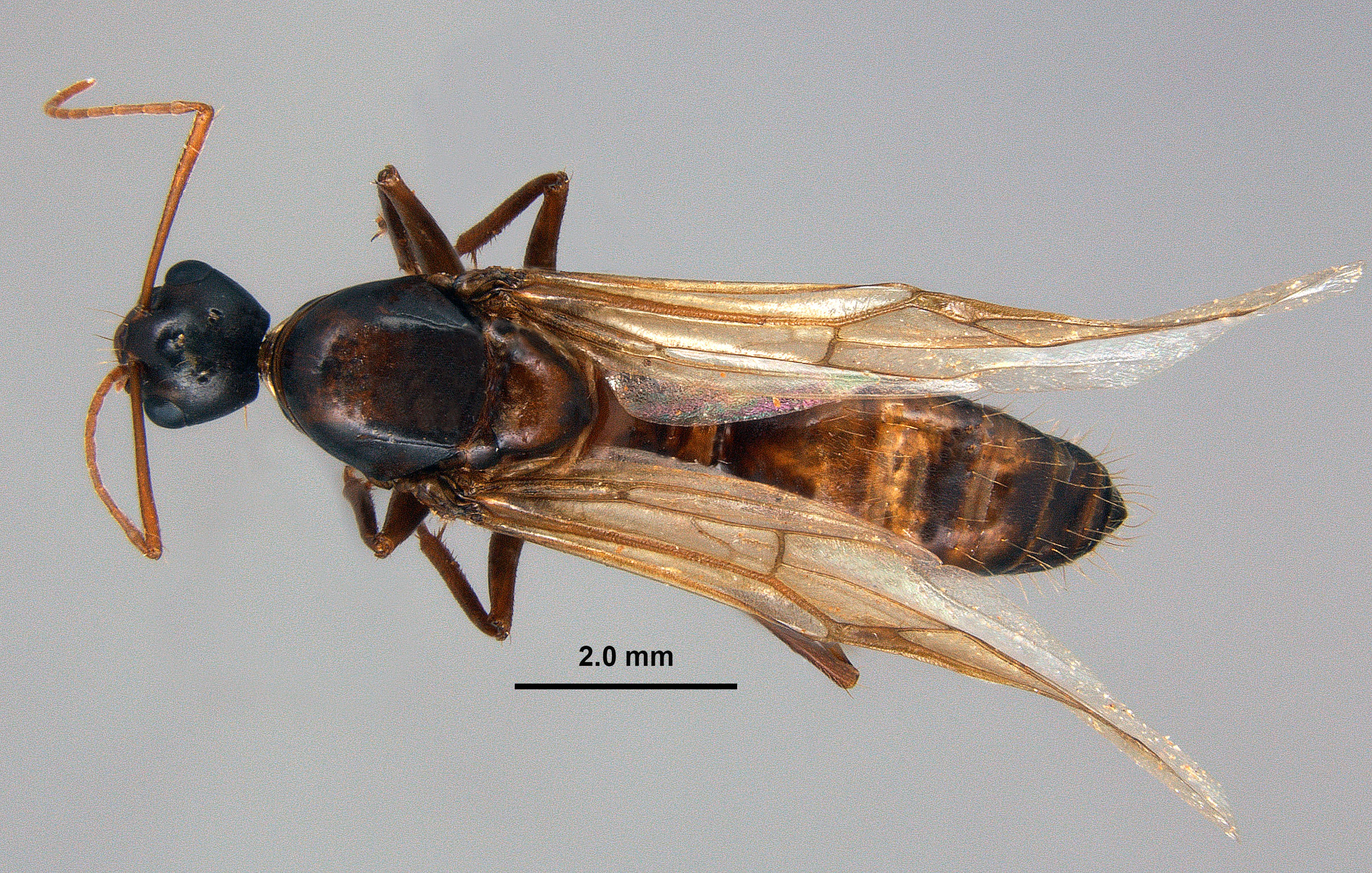Introduction
Camponotus americanus is in the subgenus Camponotus, which includes some of the true carpenter ants that nest in wood. Species in this subgenus are large ants with workers ranging from 6 to 14 mm in length. The clypeus is ecarinate to only scarcely carinate, antennal scapes are not flattened at the bases, clypeal fossae are well developed, and the heads of major workers are usually broader than long. This subgenus includes three species in Mississippi.
Taxonomic History
Camponotus americanus Mayr, 1862: 661 (w.q.) U.S.A. Emery, 1893: 674 (m.); Wheeler, G.C. & Wheeler, J. 1968: 216 (l.). Combination in C. (Camponotus): Emery, 1925: 74. Junior synonym of castaneus: Mayr, 1886: 420. Revived from synonymy as subspecies of castaneus: Emery, 1893: 674; Wheeler, W.M. 1913: 117; Wheeler, W.M. 1917: 465; Wheeler, W.M. 1932: 13. Revived status as species and senior synonym ofrufinasis: Creighton, 1950: 365. See also: Eisner & Wilson, 1952: 47.
Diagnosis
This species could be easily confused with C. castaneus (Latreille), a similarly colored and sized carpenter ant that invades houses and other buildings with more regularity (although not commonly). Camponotus americanus can be distinguished from C. castaneus by its darker head and erect hairs on the cheeks. In C. castaneus the head is the same orangish-red color as the rest of the body, and the cheeks (especially as seen in the major workers) lack erect hairs. Southeastern specimens often have spots of darker coloration on the dorsum of the mesosoma on C. americanus, whereas in C. castaneus, the coloration is much more uniform without any mottling or spots of other colors.
Identification
Worker: Large (total length 7.0–10.0 mm or more in length), mesosoma strongly arched; reddish-brown with brownish black infuscation on mesosomal dorsum, head blackish, overall shiny with sparse pubescence; scattered elongate setae on head and body, a few stiff, shorter erect setae on cheeks; head of major longer than wide; scape extends beyond pastor edge of head by more than diameter of scape, 12 antennomeres; eyes large, located above midline of head; waist one-segmented; gaster shiny, pubescence mostly lacking; no sting, acidopore present.
Queen: Similar to workers but larger, with wings or wing scars, mesosoma enlarged, mesosoma and petiole dark reddish brown, eyes large, ocelli present.
Male: Small (smaller than worker), dark reddish brown with blackish head, winged, 13 antennomeres, eyes large, ocelli present.
Biology and Economic Importance
This species typically nests in the soil, usually under stones, rotten logs, or sometimes under litter. Because C. americanus is usually a soil nesting species, it is not considered to be a serious economic pest. Alates have been collected from mid March through late May. This is a common species in the Southeast.
Pest Status
Because Camponotus americanus nests in rotting logs, it can also be a structural pest, though it is not often reported as such. This ant does not sting but can bite and cause minor irritation by ejecting formic acid from the acidopore located at the posterior portion of the ant.
Distribution
Eastern US from New England south to Florida and west to Oklahoma and Texas. Reported from all of the southeastern states except FL: AL, AR, GA, LA, MO, MS, NC, SC, TN
.
Literature Cited
Bolton, B. 1995. A new general catalogue of the ants of the world. Cambridge, Mass.: Harvard University Press, 504 pp.
Creighton, W. S. 1950. The ants of North America. Bull. Mus. Comp. Zool. 104: 1-585.
Eisner, T. and Wilson, E. O. 1952. The morphology of the proventriculus of a formicine ant. Psyche (Camb.) 59: 47-60.
Emery, C. 1893. Beiträge zur Kenntniss der nordamerikanischen Ameisenfauna. Zool. Jahrb. Abt. Syst. Geogr. Biol. Tiere 7: 633-682.
Emery, C. 1925. Hymenoptera. Fam. Formicidae. Subfam. Formicinae. Genera Insectorum 183: 1-302.
Mayr, G. 1862. Myrmecologische Studien. Verh. K-K. Zool.-Bot. Ges. Wien 12: 649-776
Mayr, G. 1886. Die Formiciden der Vereinigten Staaten von Nordamerika. Verh. K-K. Zool.-Bot. Ges. Wien 36: 419-464.
Wheeler, G. C. and Wheeler, J. 1968. The ant larvae of the subfamily Formicinae (Hymenoptera: Formicidae): supplement. Ann. Entomol. Soc. Am. 61: 205-222.
Wheeler, W. M. 1913. Ants collected in Georgia by Dr. J. C. Bradley and Mr. W. T. Davis. Psyche (Camb.) 20: 112-117.
Wheeler, W. M. 1917. A list of Indiana ants. Proc. Indiana Acad. Sci. 26: 460-466.
Wheeler, W. M. 1932. A list of the ants of Florida with descriptions of new forms. J. N. Y. Entomol. Soc. 40: 1-17.
Links
AntWeb
AntCat
AntWiki
|
